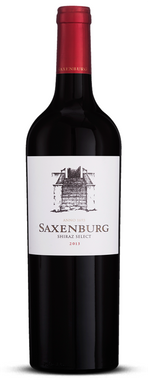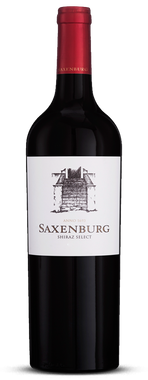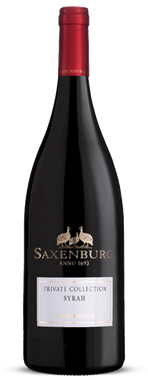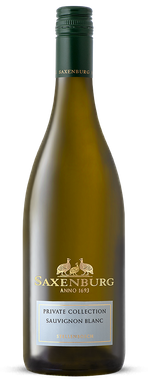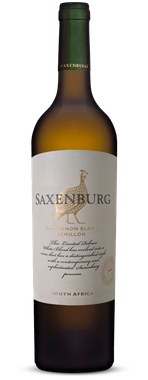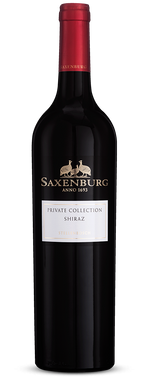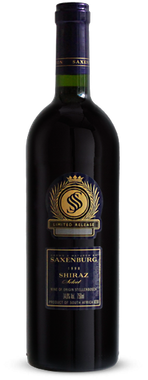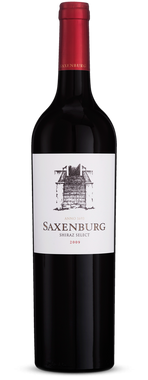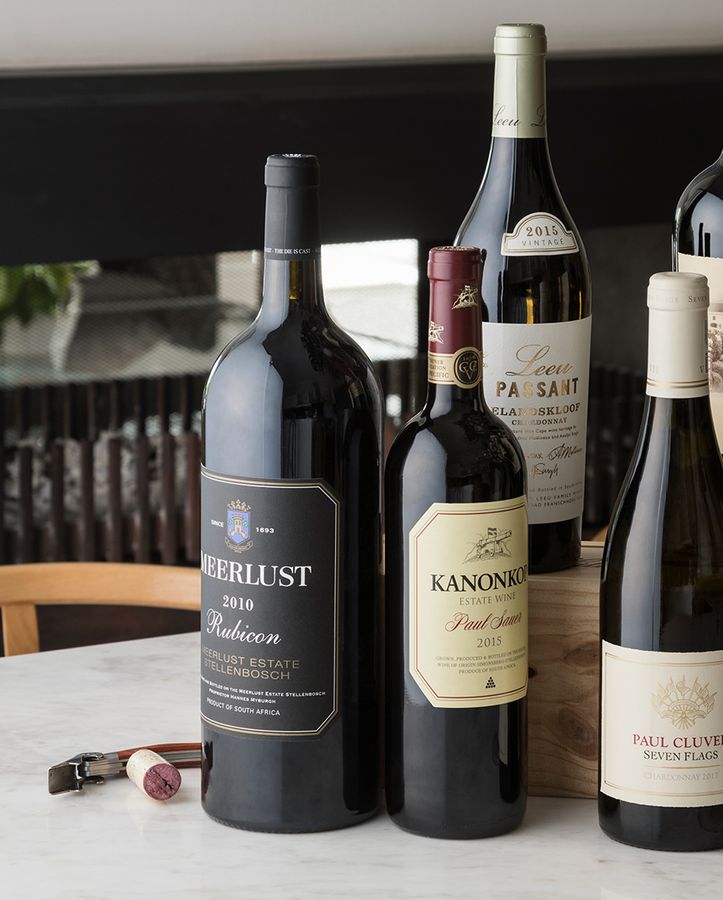Saxenburg Wine Estate has been in the Bührer family since 1989, Swiss by birth, South African by blood (Africa demands blood, no?). Vincent Bührer is one of the second generation Bührers to take on the custodianship of this 200 ha piece of land on the Polkadraai Hills, a Granite mine in a past life, now with 60 ha under vine. Saxenburg enjoys an illustrious past in the South African wine industry, the Bührer family with well-known winemaker Nico van der Merwe, who made wine here for over 26 years (and left in 2017 to focus on his own label), established themselves internationally selling 85% of their wines abroad in the early 90s. With the introduction of other New World wines into the market, however, in recent years Saxenburg has had to reassess. The result? The beginning of a new era, a focus inward, and the rediscovery of an estate that has lain dormant. “A sleeping giant,” Vincent says.
Plaaskind
Vincent wasn’t always going to make and sell wine. Even though the Bührers come from a fifth-generation wine and spirits producing family in Switzerland (they specialised in producing grappas and schnapps), and the fact that Vincent’s parents owned a French wine farm, Château Capion in the Languedoc from 1996 to 2017 (where Nico van der Merwe also made wine as one of South Africa's first flying winemakers until 2002). Vincent didn’t seem convinced, he had grown up on Saxenburg with his four brothers and sisters and had his sights set on banking. Though thankfully two years in London dispelled THAT particular aspiration, and when he spent the summer before he was scheduled to start his MBA on a cattle ranch in West Texas, it finally hit him: Ek’s ’n plaaskind. {“I’m a farm child.” - though his Afrikaans has a tough accent given how many languages he already speaks, I liked that you could see he THOUGHT it in Afrikaans.} Vincent came back to South Africa, though STILL not to make wine. Being more of a strategic thinker he first started a company with a friend making building bricks from waste (a company that is still in existence), and THEN, fatefully met Nicolò (Port2Port founder and CEO) in 2014 and became the co-founder of this very online fine wine marketplace. Off the record, I’ve always liked Vincent, the CONSUMMATE gentleman in any situation, thoughtful and calm, though this time, I saw a spark. A passion, a duty to something, to a piece of land, to Saxenburg.
Good Company
Too long had they relied on the old ways, accepting terms like: “That’s how we’ve always done it.” / “Don’t change it.” Nature is ever-changing, so are we, South African taste in wine has drastically changed from the late 80’s and early 90’s to now. WE (or MOST of us) now prefer a fresher, interference-free style of wine, wine made in the vineyard, made to display its terroir rather than its winemaker. Vincent, having had a front-row seat to these innovations and changes within the industry, knew what to do. “If you’re going to take big risks, take them in good company.” And he did, just like he did in his previous two business ventures, he set out to construct a team of merry men to reimagine Saxenburg for a new generation. Dirk van Zyl started in December 2019, born on a wine farm in Bonnievale, he made wine at DeMorgenzon before becoming head winemaker at Saxenburg. Dirk’s sense of authenticity permeates the place these days. He accompanies us on a tour of the cellar, where he shows us his own (Callie-inspired) submerged cap contraption. He weaves his hands through the juice and lets me taste the barrel-fermented Chenin from the very expensive barrels he insisted Vincent buy, versus the sauvignon fermenting in tank. In their first zoom wine launch, introducing Dirk’s new white wine vintages, including the Winemaker’s Blend (sadly limited to their wine club due to its small numbers) - Dirk and Vincent present heat maps and discuss their strategy on replanting vineyards, the different clones, their reasoning, with PASSION. I sit up.
Syrah
The decomposed granite soils of Saxenburg are uniquely suited to Syrah, though, as Vincent says, it’s been Shiraz for much longer than it’s been Syrah. You know the distinction right? Shiraz being more in reference to New World interpretations of the grape (see Australia), while Syrah implies a more old-world, elegant style of wine - not fruit-forward, but leathery, restrained, ‘cerebral’ as Anthony Hamilton Russell would say. Vincent says that if they only had to produce one wine, it would be Syrah from Polkadraai - their 2015 Shiraz Select was awarded a gold medal at the Decanter awards at 95 points and Tim James wrote: “the Saxenburg Shiraz Select 2015 is starting to give evidence of its origins in some aromatic and flavour nuances as well as its tannic structure… this is a welcome development.” Dirk is growing Syrah in various different blocks, he’s farming them together with viticulturist Donovan Dedricks in terroir specific ways, and blending them to represent the Polkadraai Hills, that golden thread that runs through the wines of neighbouring farms like Reyneke and the Karibib vineyards too. Theirs is a legacy problem, given that so many varietals do well on the diverse terroir of Saxenburg, they cannot justify merely abandoning them all in favour of Syrah in one go. As Vincent says, they make Cabernet Sauvignon in honour of Stellenbosch, Pinotage in honour of South Africa, and Syrah in honour of Saxenburg. I don’t know about you, but this respect of their legacy and the nurturing of it bodes well, no?
Polkadraai
The Polkadraai Collective was established by Saxenburg during lockdown for the same reason a number of collaborations have formed in recent years. To designate unique terroir, study it, and make the best terroir-specific wines possible to sell to a larger, more discerning audience. In essence building an identity for our diversity will assist us in establishing an internationally recognised premium wine industry, which in turn will cater to a larger, more finely attuned audience, and ultimately: SELL MORE WINE. We need this ON TOP of our kanniedood spirit, the freedoms we enjoy in making wine in South Africa, the quality of the wines being produced, etc. I’ve been wondering about the importance of these designations, that Syrah from Saxenburg should be classified under Polkadraai Hills rather than Stellenbosch, or Hamilton Russell Pinot under Hemel-en-Aarde Valley, rather than Hemel-en-Aarde. OR that wines should aspire to become accredited by the Cape Vintner Classification as a sign of quality. I became confused as to the various levels of importance - essentially which club to ascribe to. And then I realised, they’re all relevant, they’re all a sign of a maturing industry, of SA wine trying to find its footing in an international sense without government help (or even ANY kind of interest). BECAUSE we have such freedom/disinterest our options are many and varied, and EXCITING, and I think therefore relevant to start defining the smallest common denominator - terroir. Therefore, let it be Polkadraai, and let us familiarise ourselves with Polkadraai Syrah and understand its qualities, as it will be one of the building blocks of our future.
Kanniedood
Vincent may be Swiss, but his ethos is distinctly South African: “Hope for the best, plan for the worst.” At the end of the day, however, the Bührers have made it clear they’re here to persevere. “This is home. We don't know anything else. We don't want to know anything else. We’ve done it for 30 years, we’re going to power on from here.” Hope is infinite in Africa, who could blame us given the potential?
